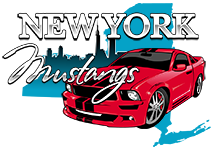...I've never had a problem (as well as friends) at the tech line at LVD with a Plastic line!
It's not LVD's call though it's NHRA. They can let it run but it's not legal and it's not safe. I've seen plastic line pop in a cabin and it's not pretty. I popped a copper line last year and oiled the track. Now I run -an braided steel. Plastic line FTL!!

A $10 copper line kit is well worth the investment.
1.10 OIL SYSTEM
Accu-sump, dry-sump tanks, oil filters, oil supply lines, etc., prohibited in driver compartment and outside of frame and/or steel body / fenders. Oil pressure gauge and line permitted in driver compartment. Metal or steel braided line mandatory, maximum 3/16-inch (4.76 mm) inside diameter. Power enhancing additives prohibited.
1.5 FUEL SYSTEMS
Location: All fuel tanks, lines, pumps, valves etc., must be outside of the driver's compartment and within the confines of the frame and/or steel body. Cool cans, in full-bodied cars, must be mounted a minimum of 6-inches (15.2 cm) forward of firewall. Fuel blocks must be located at least 6-inches (15.2 cm) forward of the flywheel/bellhousing area.
Lines: All non-OEM fuel lines (including gauge and/or data recorder lines) must be metallic, steel-braided or FIA accepted "woven pushlock". A maximum of 12-inches (30.5 cm) total (front to rear) of non-metallic or non-steel braided is permitted for connection purposes only; individual injector nozzle and motorcycle fuel lines are excluded. Fuel lines (except steel braided lines) in flywheel/bellhousing area must be enclosed in a 16-inch (40.6 cm) length of steel tubing, 1/8-inch (3.2 mm) minimum wall thickness, securely mounted as a protection against fuel line rupture. It is mandatory that fuel lines passing supercharger drive belts be steel braided or be enclosed in protective steel tubing. Fuel lines must not be routed in the driveshaft tunnel.
 ,
, ,
,
 lol
lol